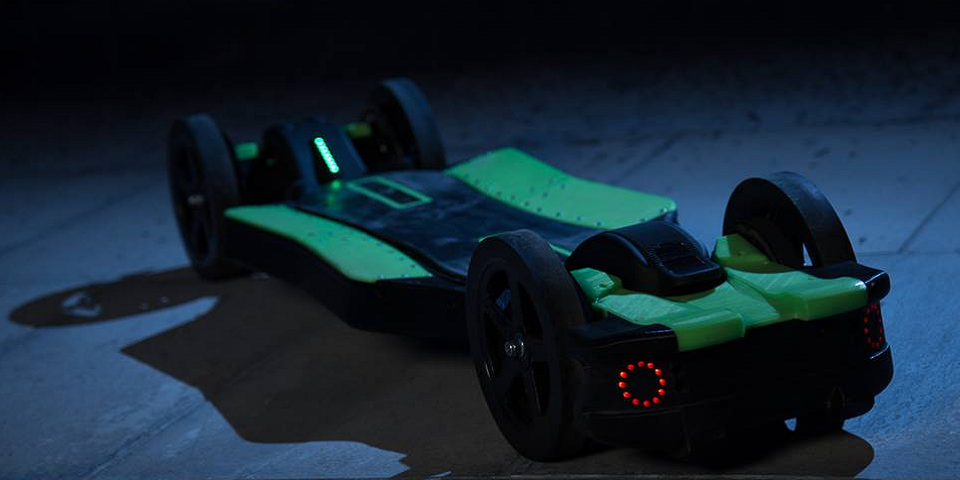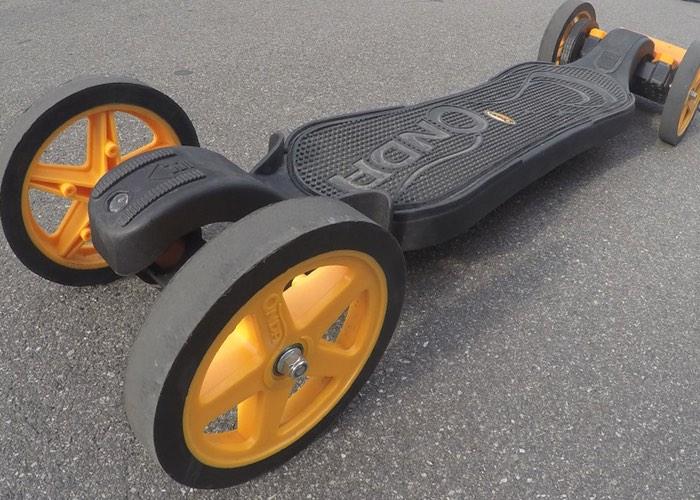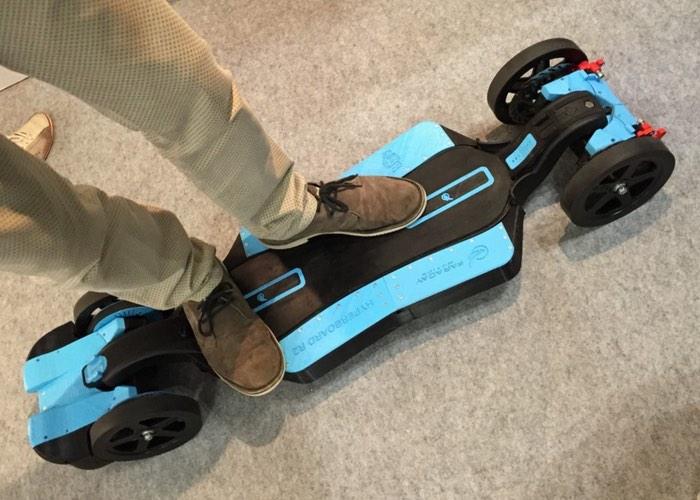 Skateboarding most likely began in the 1940s with the attachment of wheels to the bottoms of wooden crates. It started to catch on with surfers during the 1960s who were looking for something to do when the waves were too flat for fun. The introduction in the 1970s of cadillac wheels to replace the previous clay ones improved performance and the popularity of skateboarding has been skyrocketing ever since. In fact, in a recent survey, it was found that more kids in the United States under the age of 18 were riding skateboards than playing baseball.
Skateboarding most likely began in the 1940s with the attachment of wheels to the bottoms of wooden crates. It started to catch on with surfers during the 1960s who were looking for something to do when the waves were too flat for fun. The introduction in the 1970s of cadillac wheels to replace the previous clay ones improved performance and the popularity of skateboarding has been skyrocketing ever since. In fact, in a recent survey, it was found that more kids in the United States under the age of 18 were riding skateboards than playing baseball.
 As large numbers of skateboarders ‘grow up’ we find a new group emerging that has a significant skateboarding population: those over 18. Sune Pedersen, head of Faraday Motion’s business strategy and software team, is one of those people. While suffering the pains of an old knee injury, Pedersen began to wonder if he couldn’t create some new form of board-based transportation that would work for him. It wasn’t too much of a leap to think of making a motorized skateboard as some models already existed, the key was to improve it.
As large numbers of skateboarders ‘grow up’ we find a new group emerging that has a significant skateboarding population: those over 18. Sune Pedersen, head of Faraday Motion’s business strategy and software team, is one of those people. While suffering the pains of an old knee injury, Pedersen began to wonder if he couldn’t create some new form of board-based transportation that would work for him. It wasn’t too much of a leap to think of making a motorized skateboard as some models already existed, the key was to improve it.
After years of experimentation and prototyping, Faraday Motion is ready to release its 3D printed electric skateboard…for pre-order. And if you’ve got access to a 3D printer and $560, you can sign up to get the spine deck, engine parts, electronic essentials and 3D files necessary to begin assembly of your own. For a bit more, they’ll send you all the parts and you put it together. And, since money and time are often interchangeable, if you have more of the former than the latter, you can also order one that only requires you to get it out of the box.
 This creation is controlled by a smartphone app and can reach speeds of 18 miles per hour and hold a charge for about 6 miles before it needs to be topped up. That’s nowhere near the world record speed of 80.74 miles set by Mischo Erban in 2012, and we should all thank goodness for that. While 18 mph is enough to feel the wind in your hair, without feeling the repetitive motion strain of the pain in your knee, work is currently underway on a model called the HyperBoard that can reach top speeds of nearly 25 mph, but you’ll still have to wait a bit for that.
This creation is controlled by a smartphone app and can reach speeds of 18 miles per hour and hold a charge for about 6 miles before it needs to be topped up. That’s nowhere near the world record speed of 80.74 miles set by Mischo Erban in 2012, and we should all thank goodness for that. While 18 mph is enough to feel the wind in your hair, without feeling the repetitive motion strain of the pain in your knee, work is currently underway on a model called the HyperBoard that can reach top speeds of nearly 25 mph, but you’ll still have to wait a bit for that.
 If you want to print the board yourself, you’ll need to plan about 100 plus hours worth of printing time on a print bed that is a minimum of 200 x 200 mm, and then, of course, more time after you realistically assess your ability to assemble such things. Waiting for the HyperBoard means you’ll need to clear about 500 or more hours from your calendar and assume at least a couple of weeks for assembly, so it’s good that you can start planning now. So, start saving up your vacation days and you just might have enough time to create the vehicle that takes you there!
If you want to print the board yourself, you’ll need to plan about 100 plus hours worth of printing time on a print bed that is a minimum of 200 x 200 mm, and then, of course, more time after you realistically assess your ability to assemble such things. Waiting for the HyperBoard means you’ll need to clear about 500 or more hours from your calendar and assume at least a couple of weeks for assembly, so it’s good that you can start planning now. So, start saving up your vacation days and you just might have enough time to create the vehicle that takes you there!
Discuss this story in the Faraday Motion forum thread on 3DPB.com.
Subscribe to Our Email Newsletter
Stay up-to-date on all the latest news from the 3D printing industry and receive information and offers from third party vendors.
You May Also Like
Profiling a Construction 3D Printing Pioneer: US Army Corps of Engineers’ Megan Kreiger
The world of construction 3D printing is still so new that the true experts can probably be counted on two hands. Among them is Megan Kreiger, Portfolio Manager of Additive...
US Army Corps of Engineers Taps Lincoln Electric & Eaton for Largest 3D Printed US Civil Works Part
The Soo Locks sit on the US-Canadian border, enabling maritime travel between Lake Superior and Lake Huron, from which ships can reach the rest of the Great Lakes. Crafts carrying...
Construction 3D Printing CEO Reflects on Being Female in Construction
Natalie Wadley, CEO of ChangeMaker3D, could hear the words of her daughter sitting next to her resounding in her head. “Mum, MUM, you’ve won!” Wadley had just won the prestigious...
1Print to Commercialize 3D Printed Coastal Resilience Solutions
1Print, a company that specializes in deploying additive construction (AC) for infrastructure projects, has entered an agreement with the University of Miami (UM) to accelerate commercialization of the SEAHIVE shoreline...





























